Foundation Plugin
-
I've been investigating attributes today trying to get a better handle on this aspect of SketchUp. I've noticed that the housebuilder plugin creates a category called "einfo" and stores a number of variables one of which is the "origin". If you manually move the wall group the origin attribute will automatically reflect this change in location. This is exactly the feature I need for my various assemblies (groups) so that I can add an edit feature. Howevever, I can't seem to figure out how this attribute is automatically updating. When I create an "origin" attribute under a "einfo" category it does not update. I must be missing something.
-
Try asking those questions in the develops section, I'm sure someone there would be able to point you in the right direction. Most visitors (including me) that frequent this section (and others) would not be able to even comprehend what you're referring to.
-
The current home designer I am working for likes to use 2x4 bearing walls versus a post and beam system in their crawl spaces:

I am wondering how common this method is and if it is something I should add into the foundation plugin as another variant.
-
Crawl Space - Access
Suggest an "access opening" in the stud spacing for any future inspection or maintenance.
Centre location would be logical, miss one stud and design support for floor joist. -
For a stud wall your right you need access doors or openings. I will make another function that lets one place the opening after the fact, that way they can be located by the user.
-
Does anyone have any details showing the access door through a strip footing and bearing stud wall. I have one here but I would be interested in seeing what others use so I can determine the most popular way of framing this up and then implement it.
-
What I've done in the past (and seems to work the best) is simply frame it as a door opening (36" or 48") with a 4x4 (or 4x6) with the top flush with the double top plate.
-
Something like this?

-
Medeek,
I am curious about the "white" membrane, is there to be a concrete slab poured?
If so what was the construction sequence?
If it is a moisture barrier how is it protected? -
Nathaniel -
Yep, that's basically it (though I've also see the top plates lapped into the header as well).
-
Version 1.0.3 - 08.28.2016
- Enabled interior bearing wall(s) with strip footing.
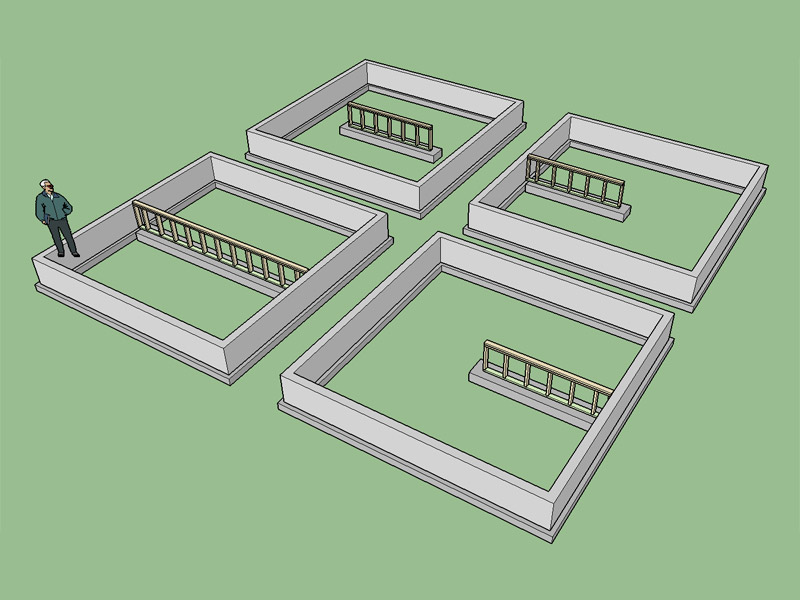
View model here:
3D Warehouse
3D Warehouse is a website of searchable, pre-made 3D models that works seamlessly with SketchUp.
(3dwarehouse.sketchup.com)
I still need to enable the ability to add framed openings into the interior stud walls. Interior stud/bearing walls can be created with single or double top plates and can be full span or partial spanning as shown in the image above.
Also note that the studs are aligned from the right side of the stemwall foundation edge so that they line up directly under the floor joists.
-
My new job has kept me away for the last few weeks so that getting anything done on the plugins has been a real challenge. Even so I've been giving some thought to stepped footings/foundations and would like some input from the designers and architects out there on what is common practice and what they would like to see available for this sort of feature within the plugin.

View mode here:
3D Warehouse
3D Warehouse is a website of searchable, pre-made 3D models that works seamlessly with SketchUp.
(3dwarehouse.sketchup.com)
Note that I messed up on this model the exterior cripple/pony walls should have only had one top plate so that the combined top plate from the shallow sections and the single top plate would have created the typical double top plate.
-
One question I've had is how much should the stemwall overshoot the step in the footing before stepping down itself? I've seen different ratios used (ie. rise/run) but I'm trying to find a consensus on what is common practice.
-
A typical step in the footing might look something like this:

-
I've repackaged the .rbz file this evening so that when it installs into SU 2017 the extension will have the appropriate hash file and appear as "signed". The foundation plugin may have the same issue with hashed file as the truss plugin, however it does not in any way affect the functionality of the plugin.
-
Version 1.0.4 - 11.27.2016
- Enabled rebar and mesh reinforcement for slab on grade foundations.
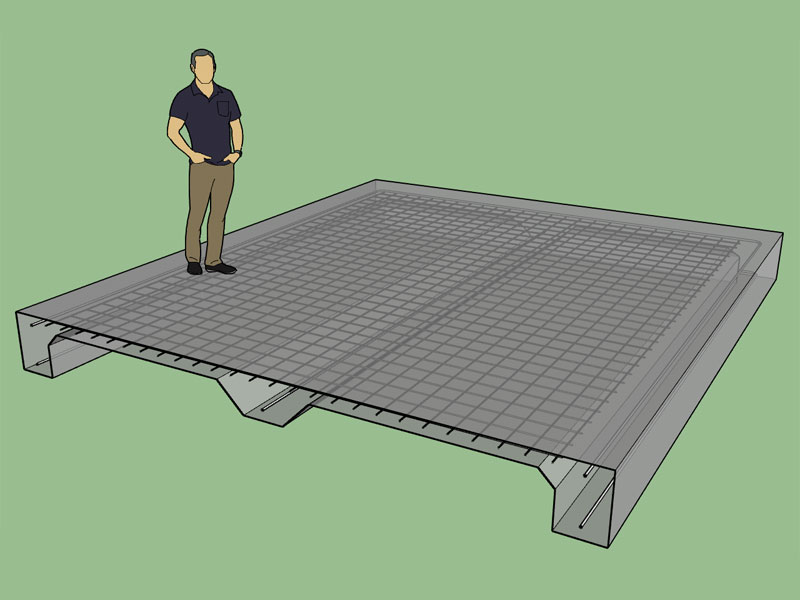
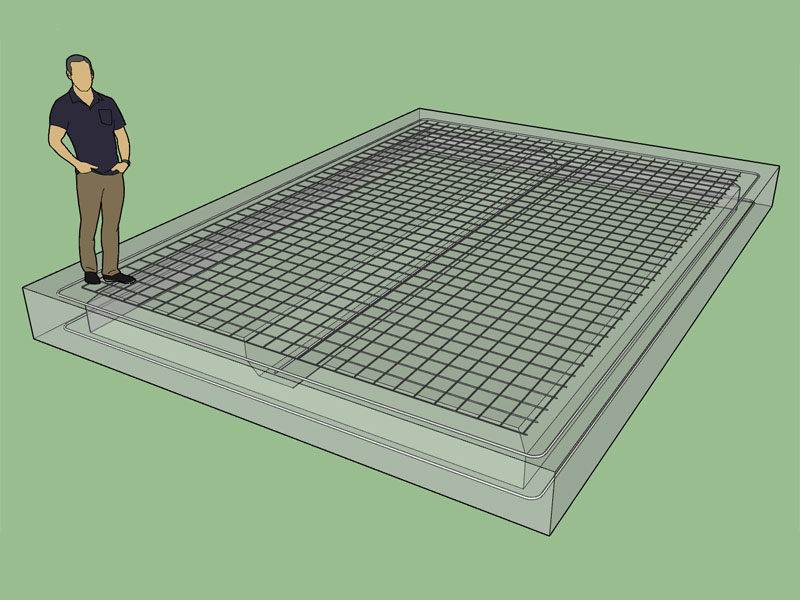
Footing reinforcement is #3 - #8 bar.
Slab reinforcement is welded wire mesh or #3 - #5 bar.
European metric sizes are available in the metric mode.
View model here:
3D Warehouse
3D Warehouse is a website of searchable, pre-made 3D models that works seamlessly with SketchUp.
(3dwarehouse.sketchup.com)
-
There are quite a few options to play with, rebar size and quantity. Notice in this example I've used #3 bar for the slab reinforcement rather than the mesh and I've doubled up bars on top and bottom of the footing (#5 bars):
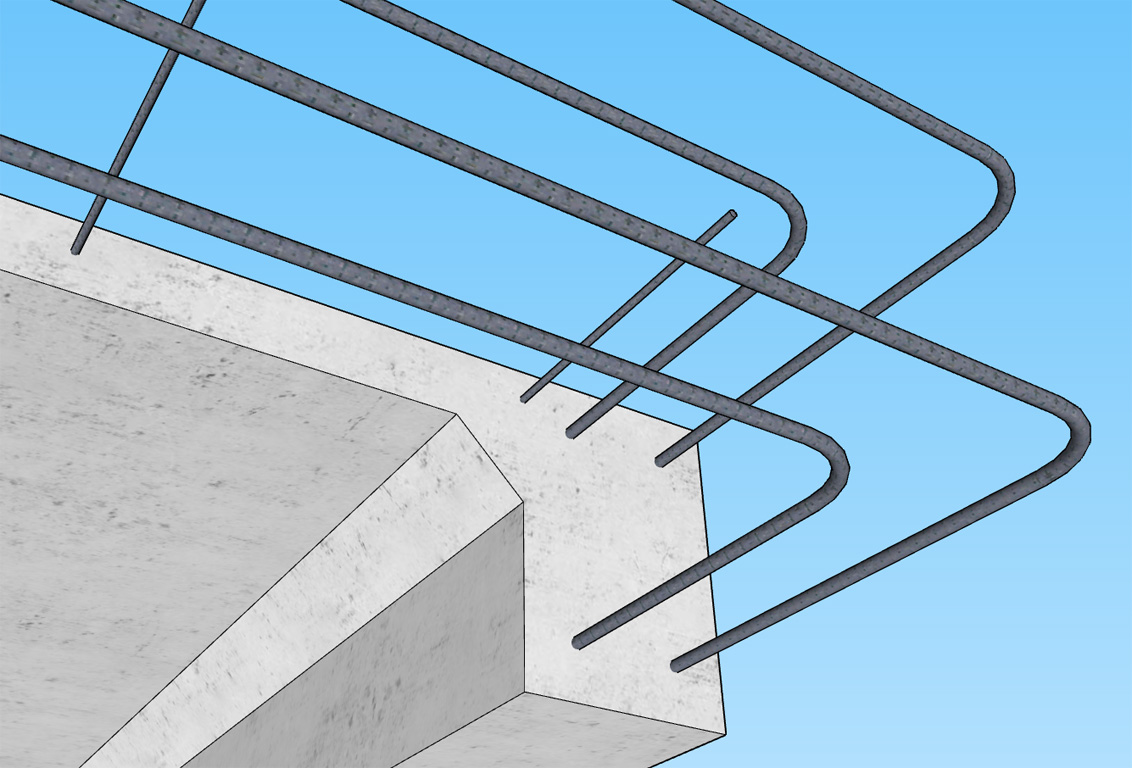
On a related note does anyone have a good texture for rebar that they would be willing to share.
-
You asked about the piers. A common design is 16"-24" square piers with top at grade. with a smaller block eg. 8x8 to raise the post above grade. the girders are often 4x6 so the spacing is about 6'-7' o.c. Larger spans mean larger beams & pads. And of course soils, as you mention may mean larger pads. I notice on your grade beam design the posts are sitting on top of the grade beam with no blocks or pedestals. The way you've drawn it, this would also be the subgrade height and posts are generally raised above the subgrade, even if they are pressure treated.
I wonder how many contractors actually do monolithic garage slabs as opposed to T-footings and "floating" slabs? They're both used in California.
-
@medeek said:
One question I've had is how much should the stemwall overshoot the step in the footing before stepping down itself? I've seen different ratios used (ie. rise/run) but I'm trying to find a consensus on what is common practice.
Good question but I'd pose it the other way around. The top of the stemwall is based on grade and building design, then the footing step would be placed accordingly.
-
With regards to Posts and their footings I usually see this sort of configuraton:
Post, pedestal and square footing
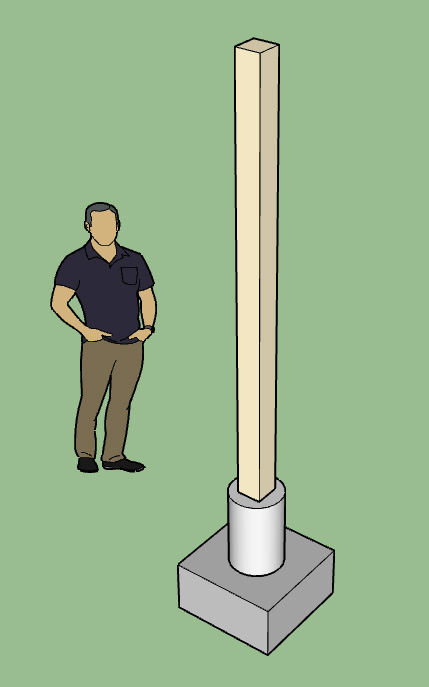
I will make the post, pedestal, reinforcement and post base bracket optional. The actual footing will not be optional.
I would like to use pre-drawn post base components (ie. Simpson Strong-Tie) but I have to figure out how to import those into the model with the API
Advertisement








